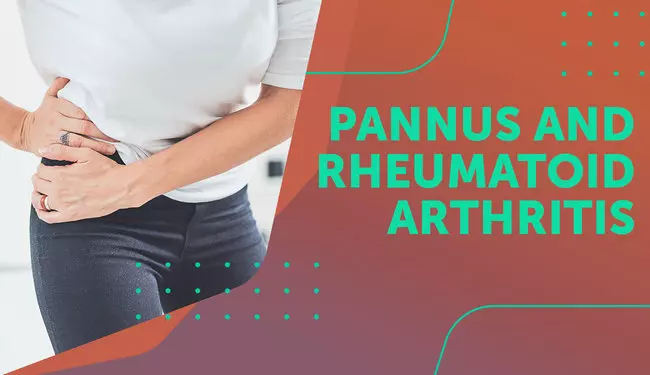(Pannus can severely affect joints, causing swelling, pain, and Damage)
Pannus is common these days, and it can occur at any age, affecting our joints and causing swelling, pain, and Damage to other tissues. Usually, Pannus results from a type of Inflammatory disease that impacts joints, rheumatoid Arthritis. It typically develops in the later stages of rheumatoid Arthritis.
The person with Rheumatoid Arthritis has thicker grown Synovium (joint lining). This abnormal growth in the tissues is known as Pannus. This is the reason RA treatment has significantly risen in the past few years.
This article will provide an overview of Pannus, including its causes, symptoms, diagnosis, and treatment.
What is Pannus?
Pannus is an abnormal growth in the tissue of joints that affects the bone structure, cartridge, and other tissues. As a result of RA, our body’s immune system attacks our joints and causes abnormal growth in tissues known as the Pannus.
Pannus can be painful, affecting our body’s bones and connective tissue. The condition can spread to other parts of the body and cause heavy pain, inflammation, swelling, and bone deterioration. Synovium is a delicate membrane between joints that connects to cartilage, a soft, spongy material at the ends of your bones, to protect them.
In a healthy joint, Synovium lubricates the joint, supplies nutrients, and also forms collagen, the main structural protein in the body. But in people with RA, it starts to grow too much, thickening and spreading to other parts of the body where it shouldn’t. These extra growths of the tissues are referred to as the Pannus.
This type of extra growth is harmful to bones and causes stiff joints. It can damage the bone, cartilage, and other tissues without treatment. The growth of the tissues sometimes seems like a tumor. But Pannus is not cancer and can’t spread to other body parts.
Causes of Pannus:-
Pannus is caused by Rheumatoid arthritis, a type of autoimmune disease that affects the joints. Pannus seriously forms in your joints if you don’t take treatment for RA. The immune system cells of our body, like B-cells, T-cells, and lymphocytes, are blamed for the Pannus formation.
Pannus can also be harmful for people suffering from ankylosing spondylitis, which causes long-term inflammation in the spine and sacroiliac joints. This condition can also lead to Pannus in the cervical spine, especially at the atlantoaxial joint.
Pannus Side Effects :-
Pannus can cause severe effects and damage to our bodies. Without treatment, it can lead to symptoms like:-
Pain,
Inflammation,
Joint swelling,
Damage in tissues,
Deformity,
Bone deterioration
How does Pannus form?
Rheumatoid Arthritis is a condition where tissue growth is caused in joints. It happens when our body’s immune starts to misfire and attack joints. So, the first thing that comes to our attention is what causes Rheumatoid Arthritis.
Scientists explain the condition is caused when the body’s immune starts attacking the body. Our genes play a crucial role in how our body performs. But it doesn’t mean just because you have RA genes, you will get the disease. Certain other things in our environment can also lead to the disease. For example:- smoking can lead to RA. However, not all people who smoke develop RA. Some people. Develop RA without any genes and environmental factors.
When someone has RA, Their immune system leads to Hyperplasia of the Synovium. As a result, immune cells get activated and release the substances like cytokines and chemokines.
This pro-inflammatory environment stimulates new blood vessels to proliferate and accelerate tissue growth. The tissue starts thickening, and the synovium membrane takes over all space between your joints and bones. Pannus can be painful, affecting your bones seriously.
In the primary stages of RA, Pannus will grow into small joints like wrists, small joints, feet, and hands. But later, it can spread to the larger parts of the body, including the knees and shoulders.
Diagnosis of Pannus:-
Symptoms Pannus a lot seem like rheumatoid arthritis pain, inflammation, swelling, and stiffness in joints. Pannus pain can be severe. Hence, it should be treated at a tight time before it starts to affect the body’s other tissues. Pannus Swelling can change joint shape, causing deformity. However, with regular RA checkups, we can prevent the formation of Pannus that affects joints.
In the past, treatment of the Pannus was less prevalent than it is today. With recent advancements in early diagnosis, we can take rheumatoid arthritis treatment on time and reduce the formation of Pannus.
Doctors will diagnose the RA before it starts to form Pannus and any obvious harm in your joints and tissues. However, if someone has RA and their medications are not working. They could have Pannus formations in the joints. Hence, doctors take different tests like X-rays, MRI, and CT scans to ensure whether your joints are only swollen or if it’s really damaged. These pictures will clearly show if Pannus is formed in your joints.
Pannus Treatment:-
Treatment of the Pannus depends on the severity of the disease. Pannus treatment is similar to RA. However, symptoms are more severe than Rheumatoid Arthritis.
Non-steroidal anti-inflammatory drugs are the first common option doctors use in the treatment of Pannnus. NSAIDs exist in forms like pills, topicals, and skin Patches. Sometimes, Doctors avoid first-line treatment with anti-inflammatory drugs like ibuprofen and naproxen. Instead, they prescribe medicines to patients.
Steroidal and non-steroidal drugs both are useful in the treatment of RA and Pannus. A class of Steroidal drugs, Methylprednisolone, prednisolone, and prednisone, are helpful in the treatment of RA and Pannus as these medicines suppress the immune response, which leads to disease symptoms. The drug causes side effects like pain, inflammation, sickness, diarrhoea, weight gain, bone enlargement, and edema.
The most common types of medicine used for Pannus treatment include disease-modifying antirheumatic drugs (DMARDs). These medicines help reduce inflammation and prevent joint destruction. Many kinds of DMARDs are available in the market. Each works in a different manner. Hydroxychloroquine, a common DMARD, is an oral supplement used to treat RA, lupus, Sjogren’s, and malaria. It also reduces inflammation and protects bone from further damage.
DMARD
Another DMARD used for the treatment of RA is Methotrexate. This drug reduces pain and swelling by converting the methotrexate polyglutamate. Some other common types of dMArDs found helpful in treatment include RA mycophenolate mofetil, leflunomide (Aravasulfasalazine (Azulfidine), and apremilast.
Pannus pain is severe, which can also cause problems in mobility and permanent damage. Hence, sometimes, the doctor suggests injecting steroids into joints to get instant relief from the pain. This is especially helpful when the treatment is in the primary stage, and most medicines take 1–2 weeks to work. These injections show instant results, providing quick relief from the pain. However, they also have minimal side effects, and effectiveness decreases over time.
If the case is more severe, The doctor also suggests surgery to replace the affected joints or remove the Pannus from the affected area through synovectomy, a process of surgical removal of the Synovium.
Medicines are surely beneficial in the treatment of Pannus. However, when combined with home remedies, the treatment can be more effective. Home remedies work slowly, but they are effective. Home remedies can slow the disease progression and reduce inflammation and other symptoms that proliferate the disease. Some home remedies helpful in Pannus are mentioned below:-
Diet and lifestyle:
A balanced Diet and lifestyle have a positive impact on our well-being. If you effectively choose your diet and lifestyle, you can reduce the symptoms of the condition. According to the study, 24 percent of people with RA said that diet significantly reduced the disease symptoms. Hence, eating anti-inflammatory foods can be beneficial for the Pannus.
Practice exercise:-
Exercises are also found helpful in reducing Pannus symptoms, predominantly aquatic exercises. Many studies show that participants experience significant improvement in pain and experience improved functional capacity after practicing the aquatic exercises for a few weeks.
Staying active:-
Staying can also manage the symptoms of RA. Practice moderate activities like walking and running to manage the effects of Pannus. You can also take suggestions from your healthcare provider and make an effective plan for your fitness level and the severity of your disease.
Plenty of rest:-
If you are experiencing heavy symptoms and pain, taking plentiful rest is essential to manage your body and reduce symptoms. Take as much rest as you can to recover early from the disease.
Hot & Cold therapies:-
Hold and cold therapies are also helpful in the treatment of disease. Heat therapy can boost blood circulation and reduce muscle stiffness and pain. In contrast, cold therapy is beneficial in swelling reduction and numbing pain.
Quit Smoking:-
Smokers are more prone to severe RA compared to non-smokers, with conditions like Pannus. Besides that, smoking also reduces the effectiveness of the RA medications and affects your physical movement. If you are a smoker, you should immediately quit the habit and focus on the good habits.
Final words:-
Pannus is a severe condition that can affect any synovial joint in the body, including joints. The severity of conditions depends on various factors, including lifestyle, diet, and health. Individuals with RA should take treatment at the right time. Otherwise, it can lead to detrimental diseases like Pannus that also impact other tissues and permanently damage the bones.
As Pannus results from RA, RA treatments are helpful in spreading the disease to other parts of the body. In the earlier stage of RA, medication can show instant results and slow down the growth of the disease. However, it doesn’t mean you can get rid of all the symptoms, including the pain and stiffness. Treatments of RA have grown over time, which can help people suffering from the disease. Medication and specific procedures can stop the progression of the disease.
FAQs:-
Why is Pannus caused?
Pannus is most commonly caused by a condition called Rheumatoid arthritis, which affects the joints. The disease is caused in the later stages of RA. If RA is not treated at the right time, It can lead to Pannus and spread to other body parts as well. Sometimes, people can also develop cervical Pannus who have gone through spine surgery.
What common symptoms do cervical Pannus patients experience?
The symptoms of cervical Pannus differ from person to person on the severity of the disease. The most common symptoms of cervical Pannus patients report include neck pain, difficulty in walking, Abnormal gait, stiffness, numbness, and tingling.
How to Treat Pannus Naturally?
Treating Pannus Naturally is not possible completely. However, with the medication, few home remedies can help. These include a balanced diet and lifestyle, exercise, rest, hot and cold therapies, and more.
What exercises are helpful in reducing the abdominal Pannus?
Exercises like bicycle crunches, planks, and leg raises can reduce the abdomen Pannus.
How fast does the Pannus grow?
Pannus is a slowly progressing disease. However, the disease appears rapidly in youngsters compared to adults.
Does Pannus also cause Blindness?
If the Pannus attacks the corneal tissues, it can lead to scar tissue. If the disease is untreated, it can lead to the severity of the eyes, like vision impairment and, ultimately, Blindness.
Is Yoga helpful for RA?
If Yoga is used in combination with Medicines, it can alleviate the pain and stiffness of RA. It has the potential to help people with diseases physically and mentally.



















